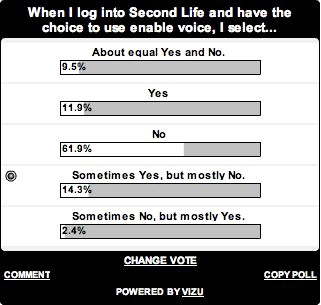Linden Lab are discussing the issue of background noise and voice chat in their ‘Knowledge Base Article of the Week’ feature.
I’m hopeful this will become a popular article as like most people, I’ve had some astoundingly bad experiences with other people’s background noise. How about you?



Recent Comments